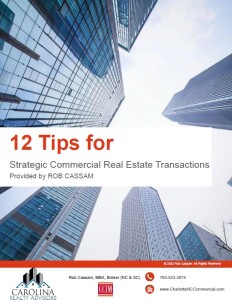In this issue
- Relocating An Existing Tenant
- Investing In Industrial Properties
- Changes In The Workplace
- Building Standards For Tenant Improvements
- Profits Found In Conserving Energy
- A Step-Down Rental
- Your Real Estate Investment
A landlord’s standard lease usually contains a clause requiring a tenant to move to another space in a commercial building or shopping center. A new tenant that is negotiating for space in the building might be surprised to see the clause before signing the lease, wondering about the reasons for it.
The owner or manager will seldom require any tenant to move to another space because it can be expensive for both the owner and the tenant. The clause must be in the lease, however, as the owner has to be able to manage space efficiently….(more)
If you haven’t considered industrial properties as an investment vehicle, it may be time to take a look. Warehouse and distribution (W&D) properties are of interest because their standard layout suits a wide range of users, in contrast to specialized manufacturing facilities. Industrial properties look good for the following reasons:
The market for industrial property is doing well with vacancy rates nationwide below those of other commercial buildings……(more)
Working from home is now becoming a trend. The growing popularity is remaking how we work, the tools we use for that work, how we communicate at work, and even the hours we work.
A major benefit to the employer is being able to downsize on square footage of space for the company. A major benefit to the worker is that they can buy a home or condominium outside of the business area in a suburb or at an ocean resort with the great locations that they desire and not have to think about what the daily commute will be….(more)
A building owner wants to be sure that improvements made by or for a tenant be of equal quality to the building itself. That’s because tenant improvements, upon completion, become a permanent part of the building. The goal is to establish building standards that will permit a suite of office space to be fully developed to a tenant’s specifications with no extras involved, while also ensuring that the improvements are of satisfactory quality, commensurate with the improvements in other tenants’ space and with the building itself.
A copy of the building standards should be included with the lease and will identify the specific materials that are to be used for such components as doors, partitions, and fixtures. And the standards will also specify the type of carpeting, floor covering, or wall finishes that the landlord will provide or allow….(more)
When an owner has an apartment property near the campus of a University, there are particular problems. The competitive situation dictates that leases be offered for one semester of nine and a half months. A twelve-month lease for students is virtually unheard of. That means there are lots of vacancies as soon as final exams have ended. (This does not apply to a few University communities where there is always an apartment shortage. In those few places, the student must lease for 12 months or have no lodging.)…..(more)
Any savings in expenses that have already been budgeted can be turned into spendable income. One expense that can be controlled to some degree is the energy used for lighting, electronics and air conditioning……(more)
Knowing what you can do in some investment situations can be the difference between an annual profit or loss in your currently owned commercial property or the one you intend to acquire. How you acquire it can be important…(more)




